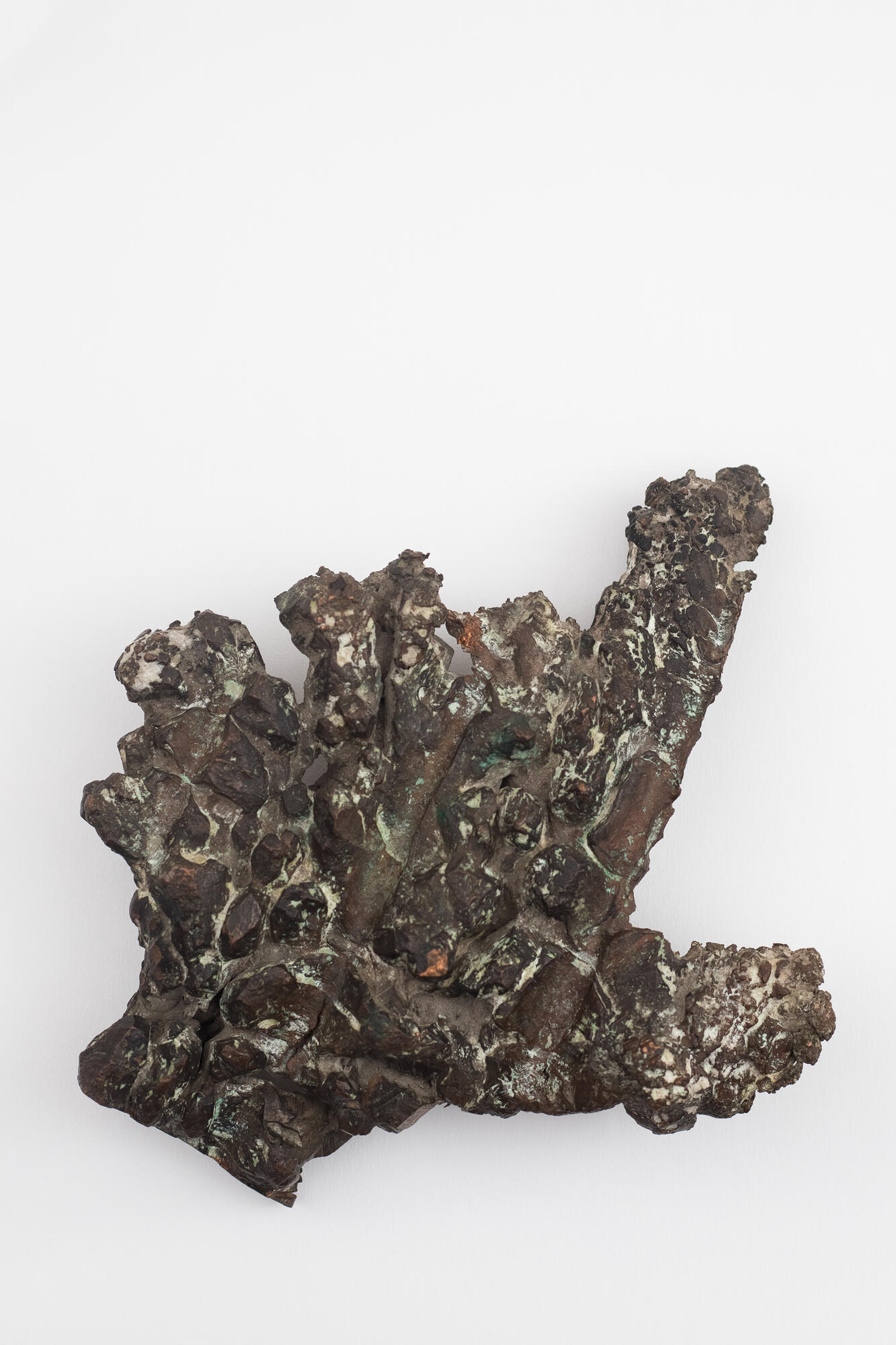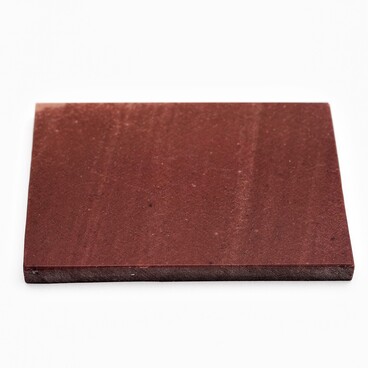The National Museum of the Republic of Karelia presents a copper nugget in its exposition. The exhibit has an unusual shape. It looks like a human hand with a forefinger put in a pointing gesture. This sample entered the museum in 1980. Nowadays it is exhibited in the hall “Stones Tell”. The exhibition illustrates the geological history of the region. It lets you see what rocks were formed in Karelia millions of years ago.
Copper is a golden-pink ductile metal. Upon exposure to air, it quickly gets a coating and turns yellowish-red. Due to its low melting temperature and availability of ore, copper became the first metal people learnt how to use. Sometimes it could be found in pure condition. This kind of copper was called native. Copper could form huge nuggets that weighted hundreds of tons.
The first attempts to process copper took place in Karelia in the middle of the 2nd millennium BC. The first goods made of local native copper appeared exactly at that time. They were made by the method of cold forging. Later, copper was mainly used as an alloy with tin — bronze — to make weapons. The village Pegrema in the Onega district of Karelia became the most famous place, where the first manifestations of copper, traces of ancient developments and the simplest copper products were discovered.
The exploitation of copper deposits on an industrial scale started in the 18th century. During Peter the Great’s reign, the Olonets province became one of the centers of copper-smelting production in Russia. The plants were supplied with copper ore from numerous mines. Their traces and dumps indicate a large mining and processing of copper. In the middle of the 18th century, most of deposits were exhausted. Therefore, almost all copper smelting plants in Karelia were closed. The manufacturing process was restarted after the discovery of Voitskoye deposit in 1742 and of Voronov Bor deposit in 1771.
Nowadays Pudozhgorskoye deposit has the most significant copper reserves. The age of the main deposits ranges from 3 million to 4.5 billion years old. Mined copper is used in the sphere of electrical engineering for making power cables, wires, and similar items.
Copper is a golden-pink ductile metal. Upon exposure to air, it quickly gets a coating and turns yellowish-red. Due to its low melting temperature and availability of ore, copper became the first metal people learnt how to use. Sometimes it could be found in pure condition. This kind of copper was called native. Copper could form huge nuggets that weighted hundreds of tons.
The first attempts to process copper took place in Karelia in the middle of the 2nd millennium BC. The first goods made of local native copper appeared exactly at that time. They were made by the method of cold forging. Later, copper was mainly used as an alloy with tin — bronze — to make weapons. The village Pegrema in the Onega district of Karelia became the most famous place, where the first manifestations of copper, traces of ancient developments and the simplest copper products were discovered.
The exploitation of copper deposits on an industrial scale started in the 18th century. During Peter the Great’s reign, the Olonets province became one of the centers of copper-smelting production in Russia. The plants were supplied with copper ore from numerous mines. Their traces and dumps indicate a large mining and processing of copper. In the middle of the 18th century, most of deposits were exhausted. Therefore, almost all copper smelting plants in Karelia were closed. The manufacturing process was restarted after the discovery of Voitskoye deposit in 1742 and of Voronov Bor deposit in 1771.
Nowadays Pudozhgorskoye deposit has the most significant copper reserves. The age of the main deposits ranges from 3 million to 4.5 billion years old. Mined copper is used in the sphere of electrical engineering for making power cables, wires, and similar items.



